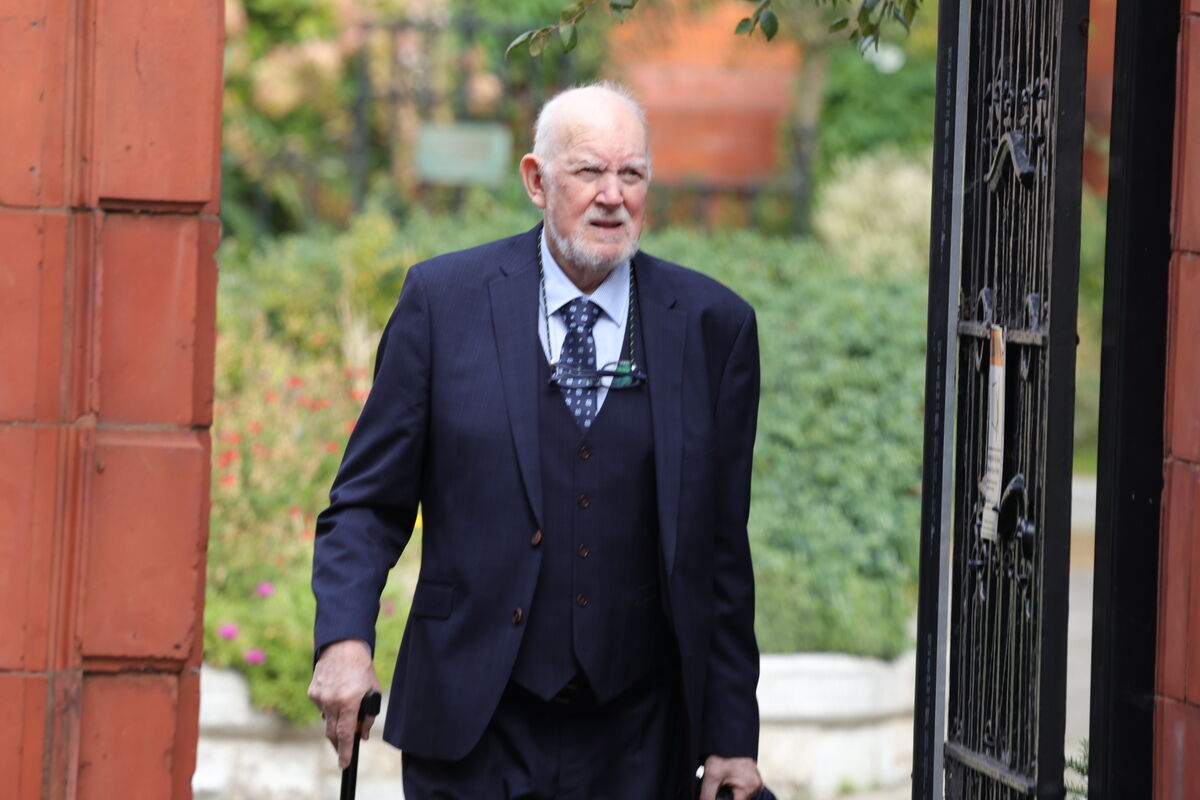Inquest hears woman was electrocuted while holding a charging mobile phone in bath

Ann-Marie O’Gorman. Picture: Collins Courts
Calls for prominent warning notices to be placed on all electronic devices about the risk of using them near water have been made following the death of a woman who was electrocuted while holding a charging mobile phone in a bath last year.
The woman's husband, Joe O’Gorman, expressed concern at an inquest into his wife’s death at Dublin District Coroner’s Court on Tuesday that many people are being lulled into “a false illusion of safety” by mobile phone manufacturers like Apple for promoting how their equipment is waterproof.
His wife, 46-year-old Ann-Marie O’Gorman, a mother of three from Shanliss Avenue, Santry, was pronounced dead at Beaumont Hospital in Dublin on October 30, 2024, where she had been rushed by ambulance after her husband had found her unresponsive in an en-suite bathroom at their family home.
Mr O’Gorman gave evidence that he had left home at around 6.40pm to drop the couple’s youngest daughter, Megan, to her first disco in Portmarnock.
He told coroner Cróna Gallagher that he had a brief 23-second call with his wife at 7.58pm while driving home at a time he believed she might have already been in the bath.
After arriving home, Mr O’Gorman said he went into the bathroom to see his wife as she wanted to find out about how their daughter was getting on.
He described how he found her lying on her side in the bath with no sign of any movement.
Mr O’Gorman said his wife was also unresponsive when he opened one of her eyelids.
At that point, he noticed her iPhone and a cable in the bath, which he grabbed and threw in a sink.
Mr O’Gorman said he got a small electric shock as he was lifting his wife out of the bath before calling to his eldest daughter, Leah, to dial the emergency services. While giving CPR to her, Mr O’Gorman said he noticed red marks on his wife’s hands and chest.
Although the deceased suffered from both Von Willebrand disease (a blood-clotting condition) and Graves’ disease (a thyroid condition), the inquest heard she was “fit and healthy” and attended a gym at 6am every morning.
In reply to questions from the coroner, Mr O’Gorman said he initially thought his wife had fallen asleep in the bath but knew immediately what had probably happened after seeing her iPhone in the bath.
Mr O’Gorman said he believed he avoided receiving a larger shock when lifting her out of the bath because he was wearing flip-flops.
He outlined how a three-metre extension cable had been plugged into a socket in the bedroom while his wife’s phone was “just barely in the water.” Mr O’Gorman complained that there is no warning on iPhones about the danger of coming in contact with water while they are being charged.
He noted that another man had died in similar circumstances in London in March 2017, while he was also aware of the death of a child in the US linked to having a charging mobile phone in a bath.
Mr O’Gorman told the inquest that he wanted the message to go out about the hazard created by charging a mobile phone in bathrooms so that it could save one other person’s life.
He claimed warnings about such a hazard should be displayed prominently on the outside of the packaging of all electronic devices.
“The only thing you hear about is how these phones are great in up to six feet of water. It gives people the idea that you can have your phone near water,” said Mr O’Gorman.
“There should be warnings that this is dangerous,” he observed.
Mr O’Gorman added: “There’s nothing being done about this whatsoever by any provider to say this is a hazard you could die from. That is all that people have to know.”
Paramedic Fiona Tormey gave evidence that an emergency call was received at around 8.25pm with an ambulance arriving at the scene at 8.38pm. Ms Tormey said the injured woman had never responded to any treatment despite being administered a shock with a defibrillator.
State pathologist Heidi Okkers, who carried out an autopsy on Ms O’Gorman’s body, said she had electrocution-type burns to her chest and left arm as well as full thickness burns to her right index finger and thumb.
Dr Okkers said it was well known that water is “an excellent conductor of electricity”. The pathologist said there was no evidence that any other health condition was a contributory factor in Ms O’Gorman’s death, while toxicology tests showed she had no alcohol or drugs in her body.
She attributed the cause of death as electrocution by a charging cable and phone while in a bath.
Dr Okkers explained that the electric charge that flowed through the victim’s body would have interfered with her normal heart rhythm. She also confirmed that there was no evidence that Ms O’Gorman had drowned as no bathwater had been found in her lungs.
Consultant forensic engineer Paul Collins, who examined the scene at the request of gardaí, told the inquest that the cable was just long enough to allow a phone to be held by someone in the bath with their left hand.
Mr Collins said he believed that the phone had fallen in the water and that in the process of turning in the bath to retrieve it, Ms O’Gorman’s right-hand finger came into contact with the handle of a shower attachment which caused the electric current to pass through her body.
In reply to questions from Dr Gallagher who observed that mobile phone chargers had a low voltage, the engineer said that an electric current of just 2 amps, which is typical for mobile phone chargers, was “more than enough” to kill a person.

Mr Collins said: "Strange to say it but if she had not taken her hand out of the bath, she would probably still be alive."
He said what happened would not necessarily be sufficient to activate a trip switch to act as a circuit breaker.
Mr Collins said he had found no fault with either the phone, the charger or the cable.
The witness stressed that people should not take mobile phones into a bathroom. “Leave it on a dressing table. It doesn’t matter if it’s being charged or not,” he said.
Mr Collins said he would not be prepared to say that there would be no risk of danger if Ms O’Gorman’s phone had not been charging while she was in the bath.
Dr Gallagher observed that electricity sockets were not generally found in bathrooms in the EU because of the real danger posed by electrical equipment coming in contact with water.
The coroner said she would consider which parties needed to be notified about the concerns raised at the inquest and would contact them in due course.
Although she noted that Mr O’Gorman’s criticism was directed at Apple, Dr Gallagher said it was a wider issue as she believed the use of electronic devices in bathrooms had become quite common.
Returning a verdict of death by misadventure because of the risk factor associated with the use of a mobile phone in a bath, the coroner offered her condolences to Ms O’Gorman’s family on what she described as “a horrendous tragedy.”









